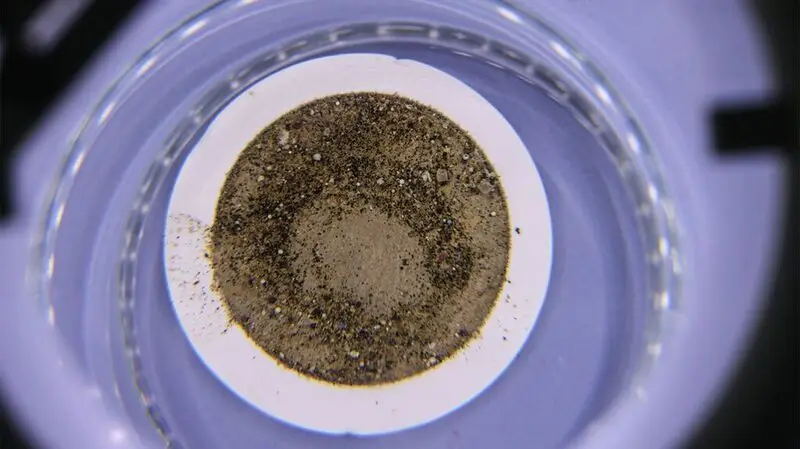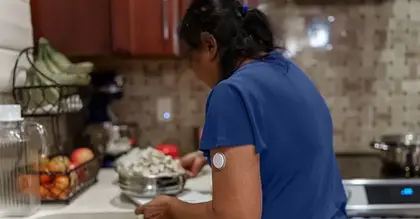
- Microplastics are abundant in everyday environments, but it is unclear what their full effects are on people’s health.
- Microplastics in the gut are a particular concern: Experts are still trying to understand their full impact on microorganisms in the gut and their environment.
- A study found that exposure to microplastics may increase the acidity of gut microbes and lead to patterns similar to those linked to health issues like colorectal cancer.
Microplastics are common and consist of tiny pieces of plastic that are 5 millimeters (mm) or less. Recent study results, which have not been published in a peer-reviewed journal yet, show that how microplastics may impact bacteria in the human gut.
Research from the project microONE, led and coordinated by teams from CBmed GmbH in Graz, Austria used human stool samples to create bioreactive cultures that researchers then exposed to microplastics.
Microplastics affected the pH of the samples, indicating that microplastics affect the metabolism and action of gut microbes. Furthermore, the researchers noted that changes in fecal pH are linked to some gastrointestinal diseases, and that some of the changes in the microbial makeup from the microplastics were similar to changes associated with conditions like colorectal cancer and depression.
These study results were presented at UEG Week 2025, the annual congress of United European Gastroenterology.
The human gut microbiome includes the microorganisms in the gut, as well as their environment. The bacteria in the human gut may impact multiple health conditions.
The current research sought to explore how microplastics impacted the makeup of gut bacteria, focusing on the possibly cancerous effects of microplastics interacting with the microbiome.
Researchers created cultures using human stool samples from healthy individuals. They kept the cultures under specific conditions for 5 days.
They exposed the cultures to five types of microplastics that are all quite common, at levels that matched what is typical for people and at higher levels. The microplastics in question were polystyrene, polypropylene, low-density polyethylene, poly(methyl methacrylate), and polyethylene terephthalate.
The research examined components like overall bacterial counts and the pH of the cultures. Researchers observed that the cultures they exposed to microplastics had a lower pH than cultures without exposure.
A lower pH indicates something is more acidic. The authors note that the lowered pH suggests changes to the bacteria’s metabolic activity,
Researchers also found changes in microbial composition that depended on the type of microplastic exposure. Certain types of bacteria either increased or decreased based on the type of microplastic exposure. Most changes occurred in a specific phylum of bacteria called Bacillota.
Along with changes in microbial composition, researchers observed shifts in metabolomic profiles,
The authors further noted that several of the plastic types led to changes in levels of valeric acid, while other individual microplastic types were linked to changes in specific metabolism components like lactic acid. Despite these changes, researchers did not observe major changes in the number of bacterial cells.
The patterns they saw in microbial composition from exposure to the microplastics were similar to patterns associated with conditions like colorectal cancer and depression.
On the flip side, they explain that the patterns differed from those linked to other health issues, like irritable bowel syndrome (IBS) and Parkinson’s disease. The authors suggested that this all highlights how much everything depends on context and also shows the complexity of the associations.
Heather A. Leslie, PhD, an independent scientist and consultant who specializes in microplastic risks and mitigation practices, who was not involved in this research, spoke to Medical News Today about the study’s findings.
Leslie commented that:
“[Microplastic particles] were reported to increase acidity in the stool microbial cultures, and to shift the structure of the microbial community in polymer-dependent ways. This would support the hypothesis that microplastics do not go unnoticed by microorganisms in the microbiome.We do not want people to be inadvertently microdosing microplastics if these are interfering with the complex balance of their gut microbiota that their health depends on.”
This research highlights the possible impact of microplastics on the gut microbiome and gut bacteria. However, it does have limitations. For example, the stool samples used in the research only came from five individuals, which can only provide so much information.
The research also only examined the impact on gut bacteria over a relatively short time, so it doesn’t show the potential long-term effects. Researchers acknowledge that the length of exposure could play a role, so more long-term research is required.
The nature of the research allowed the scientists to fully control the environment. For studies in people, researchers acknowledge that other factors, like what people eat, will have an impact on long-term outcomes.
It also remains unclear how the changes to the gut bacteria from microplastics truly impact various areas of health. Study author Christian Pacher-Deutsch, CBmed GmbH, from the University of Graz, Department of Gastroenterology and Hepatology, Graz, Austria, explained to MNT that:
“Microplastic particles show an impact on the microbiome but further research is needed to specifically look into Health implications, particularly in relation to human host factors such as the immune system. Disruptions in the microbial balance by microplastics could have multiple implications. Therefore, continued research and biomonitoring are currently the most crucial steps forward.”
At this point, the clinical application is somewhat limited. However, the results indicate the possible impact of microplastics on this key area of health.
“It is important to follow up this study because of microbiome disturbances are suspect in the pathogenesis of chronic diseases, not only the gastrointestinal ones,” Leslie noted.
“From other studies we know that a significant fraction of ingested microplastics end up being eliminated via the stool, which — until now — I considered to be good news for the body. The concern was for the absorbed fraction that ends up in the bloodstream and circulates to organs and tissues,” she told us.
“This study challenges the notion of safety of microplastics passing through the GI tract because of the potential adverse health impacts of tampering with the gut microbiome,” Leslie emphasized.





